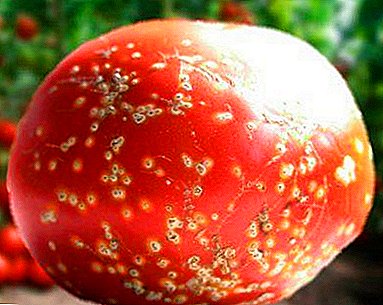
Growing stockings is a difficult and troublesome process due to a fragile organism and an unformed individual immunity. There is a high risk of chickens developing various viral and infectious diseases. How to save and protect livestock? What pathologies show furazolidone intake? How to breed it in water and give it to youngsters?
Therapeutic effect and price
 This drug, the spectrum of action of which is aimed at the elimination of harmful microbes (antimicrobial effect). The drug belongs to the synthetic derivatives of nitrofuran. Furazolidone actively fights pathogens:
This drug, the spectrum of action of which is aimed at the elimination of harmful microbes (antimicrobial effect). The drug belongs to the synthetic derivatives of nitrofuran. Furazolidone actively fights pathogens:
- shigella;
- Giardia;
- salmonella;
- causative agent of cholera;
- campylobacter;
- Pseudomonas aeruginosa.
What is the use of furazolidone? Under the action of active substances, the toxic effects of destroyed microbial cells are reduced. The antibiotic also stimulates and improves the immune system.
The drug has a bactericidal and bacteriostatic effect (depending on the dosage). Form release - tablets in a contour packaging. The price of a blister with 10 pieces is 70 rubles, with 20 pills - 150 rubles.
Indications for use
The drug is indicated in a number of infectious diseases to eliminate symptoms and prevent mortality of young animals.. The drug is indispensable for colibacteriosis, salmonellosis, coccidosis and similar diseases of bacterial origin. Using Furazolidone as a supplement to other antibiotics, the spread of the infectious agent stops faster.
Chickens Furazolidone is prescribed for the prevention of a number of diseases. Their detailed list includes influenza, smallpox, bursal disease, viral hepatitis, pseudo-pectum (Newcastle disease).
How much to give?
 For breeding the drug for chickens there are several schemes (the choice depends on the specific therapeutic purpose and the age of the young). General technology for each scheme - mixing the drug with feed or water.
For breeding the drug for chickens there are several schemes (the choice depends on the specific therapeutic purpose and the age of the young). General technology for each scheme - mixing the drug with feed or water.
- Daily chickens assigned 0.5 g of the substance to 1 liter of water (or 0.4 g per 1 kg of feed). Reception course - no more than 2 days.
- Youngsters under the age of 1 week the dosage of the drug for prophylactic purposes - 3 mg per 1000 g of live weight.
- 2-week-old fish showed 1 tablet per 100 ml of water (1 cup). Pre-pill can be dissolved in vodka (2-4 drops). Giving young animals up to 5 days.
- In case of salmonellosis, furazolidone is administered depending on the weight of the chickens - 4 mg per 1 kg. The course of treatment is 4-6 days.
Broilers antibiotic should be given a course of up to 5 days. Then you need to take a break for 1 week. Next, 2-4 days, you need to give vitamin complexes and on the 5th day to resume taking antibiotic for the prevention of diseases (the scheme is advisable in the period of maturing and fattening individuals).
In case of epidemics and outbreaks of viral diseases, Furazolidone or its analogues are assigned unscheduled. Complete the reception course should be 2 weeks before slaughter.
Overdose
In case of overdose of furazolidone in the bird, intoxication of the organism may begin.
Characteristic signs of poisoning:
- weakness and apathy (the chicken stands alone);
- vomiting and diarrhea (feathers in the anus region have characteristic contamination);
- increased thirst;
- rapid breathing;
- convulsions.
What to do in case of poisoning?
- The first and mandatory action is the introduction of a large amount of sorbent (given every 2 hours).
- Also, the young need to fall asleep in the beak laxative, immunostimulants, cardiotonic agents. Early treatment in 90% removes signs of intoxication.
- In more advanced situations at hand, it is necessary to have calcium gluconate for injection, steroid drugs, Corvalol. Furazolidone is an antibiotic that has antimicrobial and antibacterial properties.
Young animals should be given the drug in the first weeks of life to prevent serious diseases of bacterial origin. Dosage and dose depends on the age and weight of individuals..












